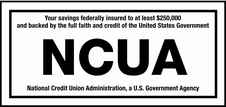Once you have prequalified, most lenders will give you 90 days until you have to requalify, which gives you three months to find the right property. Below are the basic steps most homebuyers follow:
With home loan prequalification, you have a good idea of how much you can afford to spend on a home, so the next step is to find a real estate agent. You want to work with an agent who understands your needs in a home and knows the area where you want to live. You should only work with one real estate agent at a time, and because all the agents share the same home listings, they should be prepared to show you potential properties that fit your price range.

Step 2: Make an offer.
When you find the right house, your agent can help you write an offer. Depending on how motivated the seller is, the nature of the local market, likely competition for the property, and other factors, you may want to make an offer that is higher or lower than the asking price. If you have to bid higher, make sure the bid is still within your budget, and be prepared for the seller to come back with a counteroffer. You may also want to include contingencies, such as repairs or other conditions that the seller needs to agree to as part of the sale. Once the offer is accepted, you will need to pay 1-3% of the home price as earnest money. Most buyers apply for home loan preapproval during this stage.
Step 3: Conduct appraisals and inspections.
There are additional steps before the sale can be completed. Usually, a home inspection is part of the contingencies to ensure that there are no serious structural problems or other hidden issues with the property. You may also want to consider paying for additional inspections to look for issues such as pests, radon gas, or geological issues, as well as a land survey if there is a question about the property line. The lender will also want an appraisal of the value of the property before authorizing a home loan.

Step 4: Finalize the deal.
Once all the inspections and the appraisal are complete and the contingencies are removed, you are ready to sign a purchase agreement. Whereas an offer is a request to enter into a deal, the purchase agreement is the legally binding document that outlines the exact terms of the sale.
Step 5: Secure insurance.
Before you can finalize the sale, you will need homeowner’s insurance. Insurance is required to protect you and the lender, so you will need coverage for fire, flood, theft, natural disaster, and other events. You should talk to your lender and your insurance broker to determine how much insurance you will need. Your insurance premiums can be included as part of your mortgage payments.
Step 6: Close.
Closing is the final step to formally transfer the property. With closing come closing costs, which can make up 2-5% of the total home loan costs, so remember to include closing costs in your homebuying budget. Closing costs typically pay for:
- Property fees, including fees for the home inspection and appraisal
- Loan fees, including the application fee, attorney’s fees, prepaid interest, loan origination fee, discounts points, and mortgage broker fees
- Mortgage insurance fees
- Property taxes, annual assessments, and insurance fees
- Title fees including title search, lender’s title insurance, and owner’s title insurance
Depending on the property, the type of home loan, and other factors, there may be additional paperwork and fees. Buying a home is a complex process with a number of steps, so work closely with your mortgage lender and your real estate agent to be sure you understand the requirements and costs associated with each step.
There is no formula for how long the homebuying process should take. A lot depends on market conditions, the number of properties available in your price range, and the area where you want to live. It normally takes 1-2 months to find the right property. Once you find the right house, it can take from 14-60 days to close the contract, and another 14-45 days until you need to make your first mortgage payment.













